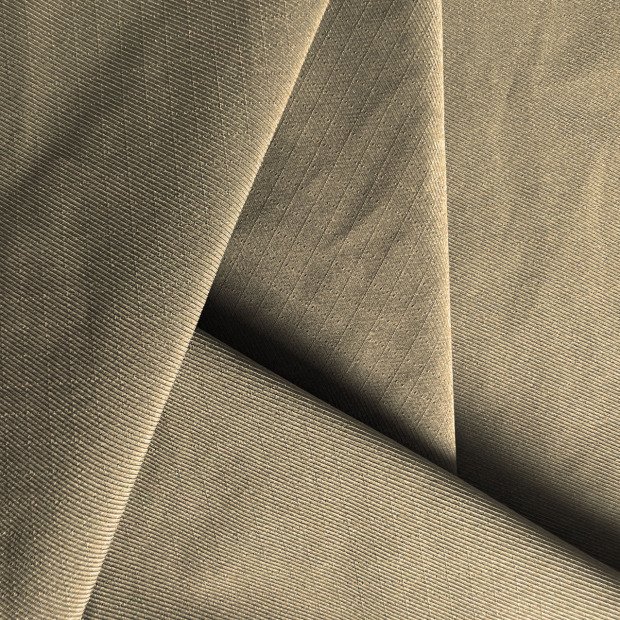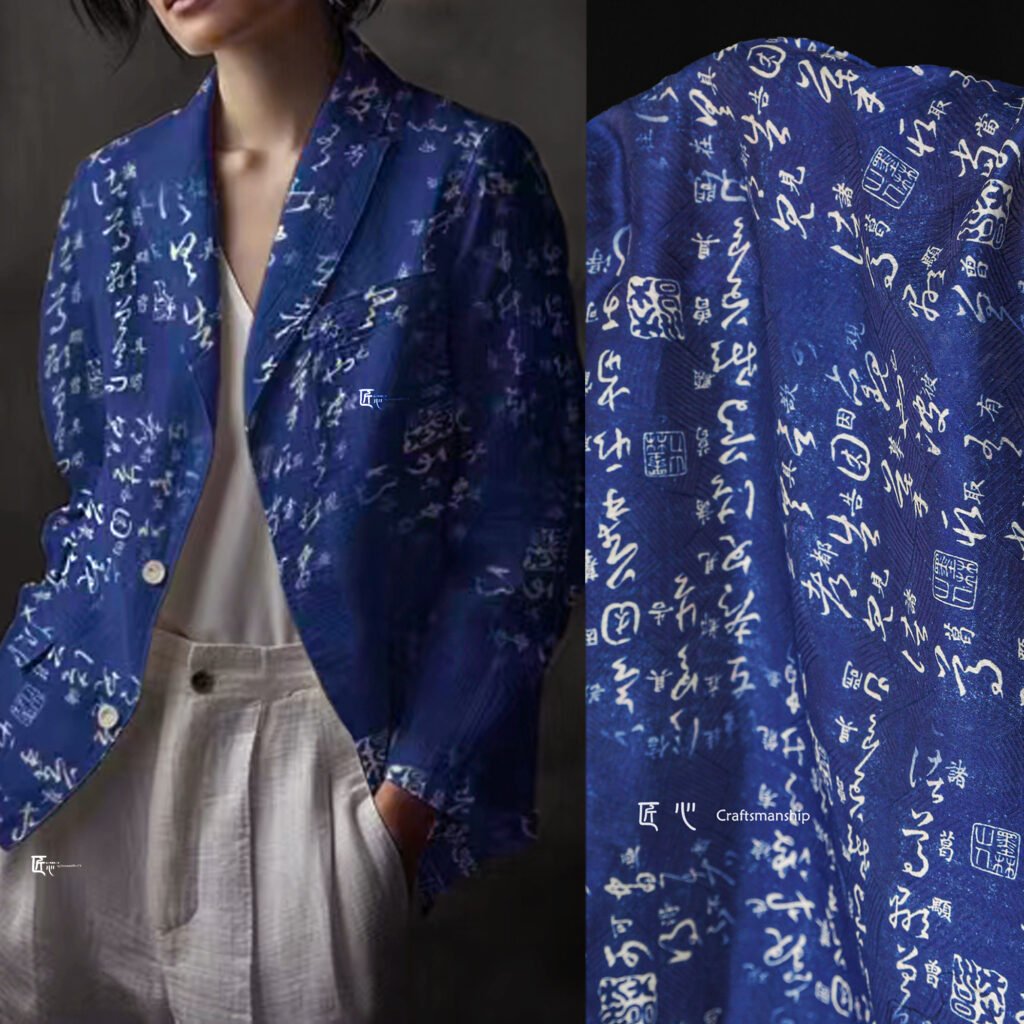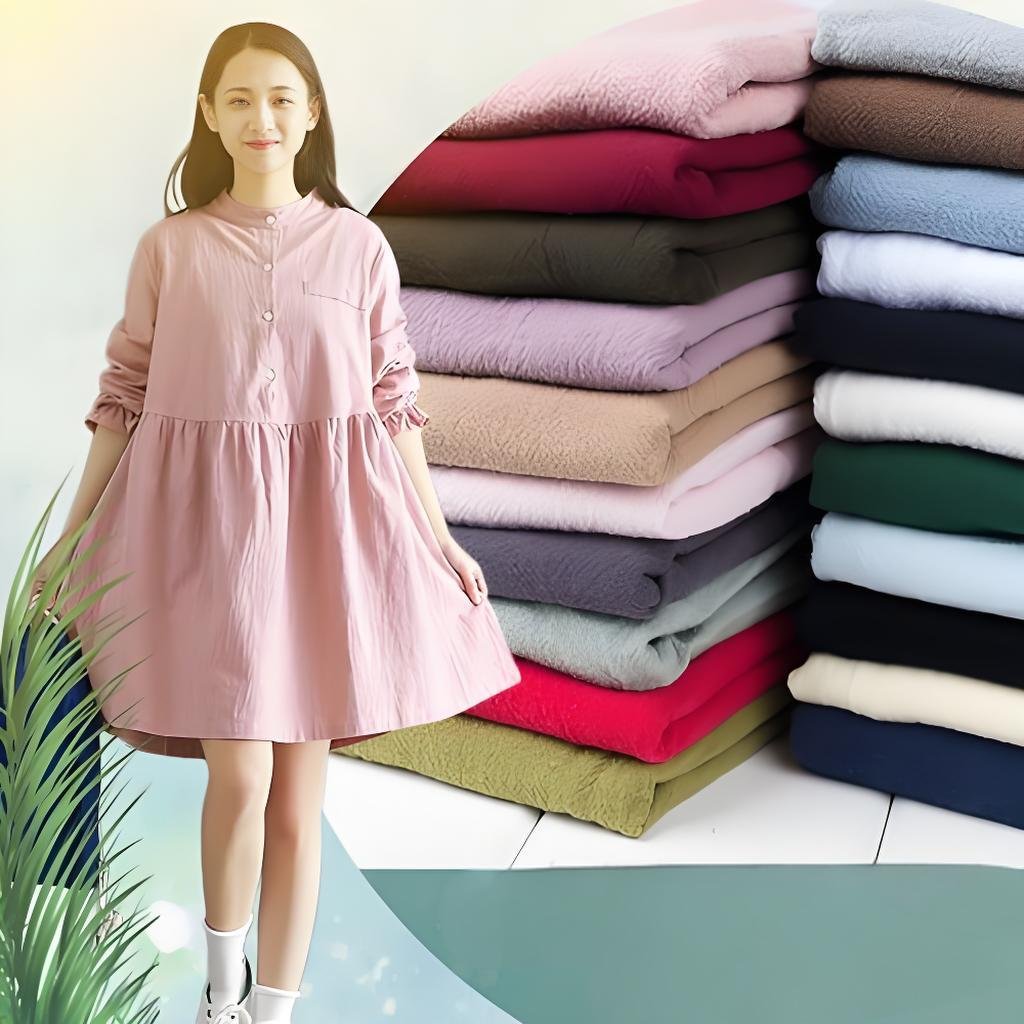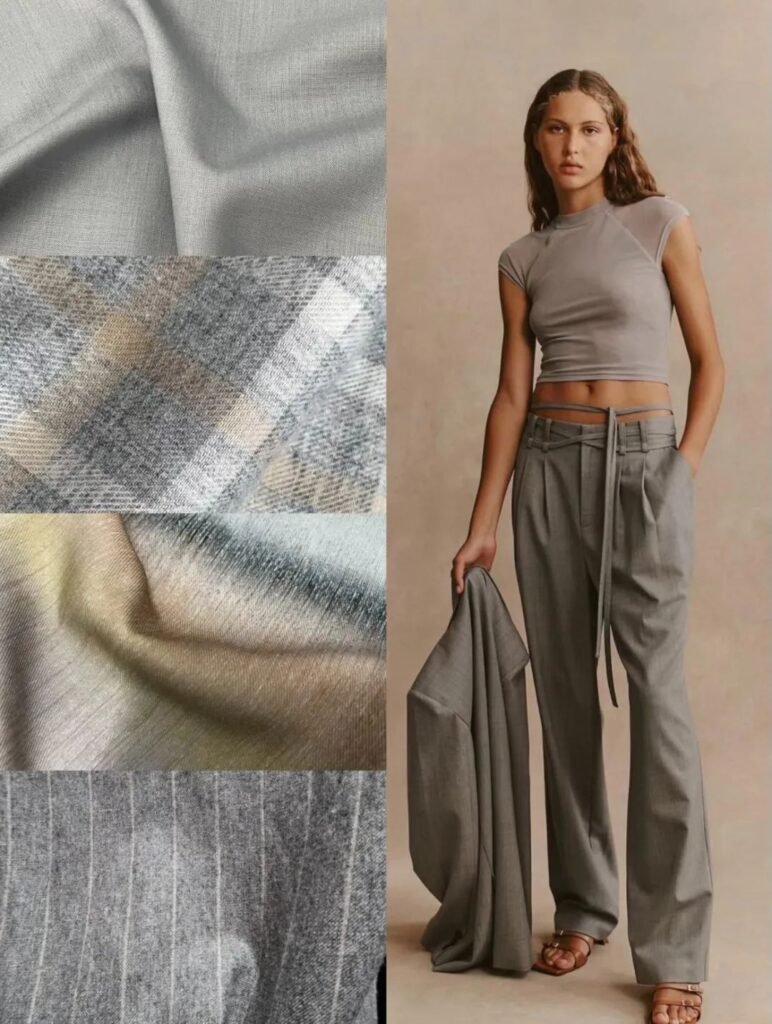
Choosing the perfect fabric is the foundation of any successful clothing line. The right textile not only defines the look and feel of your garments but also impacts production cost, performance, and customer satisfaction. How do you navigate the vast world of fibers, weaves, and finishes to pinpoint the ideal material? In essence: Start by defining your end-use requirements—comfort, drape, durability, care—and then evaluate fiber types (natural vs. synthetic), construction (knit vs. weave), weight (GSM), and functional finishes. By systematically matching performance metrics (moisture management, stretch recovery, abrasion resistance) with brand values (sustainability, cost-efficiency), you ensure each piece meets both design vision and market demand. Imagine launching a summer dress line only to discover the fabric clings in humidity—let’s learn how to avoid that pitfall and craft collections that delight from the cutting table to the fitting room.
What Key Factors Should You Consider When Selecting Fabric?
When choosing fabric for your clothing line, start by pinpointing exactly what you need the textile to do. Are you designing gym wear that must wick sweat and stretch, or breezy summer dresses that drape beautifully and stay cool? Here’s a concise answer: Evaluate end-use requirements (comfort, seasonality, movement), fiber properties (natural vs. synthetic), construction (knit vs. weave), weight/GSM (light vs. heavy), finishes (water-repellent, anti-odor), care instructions, budget, and minimum order quantities (MOQs). By mapping each of these factors to fabric attributes, you’ll be able to select materials that balance performance, aesthetics, and cost.
Matching Fabric Attributes to Your Needs
End-Use & Performance Requirements
- Stretch & Recovery: Knits with spandex content (5–15 %) provide 50–200 % stretch and 90 %+ recovery.
- Moisture Management: Look for fibers with moisture regain ≥4 % and finishes boosting MVTR >8,000 g/m²·24 h for activewear.
- Abrasion Resistance: For workwear or high-friction areas, seek fabrics with Martindale values >20,000 cycles.
Construction Matters: Knit vs. Weave
- Knit Fabrics: Single jersey for lightweight comfort; rib and interlock for stability and opacity.
- Woven Fabrics: Plain weaves for breathability; twills for durability and drape; satins for sheen.
Weight & Drape (GSM)
- Summer blouses: 80–150 GSM
- All-purpose shirting/dresses: 150–250 GSM
- Jackets, pants, structured skirts: 250–400 GSM
Functional Finishes
- Water-Repellent (DWR): Contact angle >120°, retains breathability (MVTR ~8,000 g/m²·24 h).
- Anti-Odor: Silver-ion or zinc-based finishes with ≥80 % efficacy over 20 washes.
- UV Protection: UPF 30+ coatings for outdoor apparel.
Care & Maintenance
- Machine Wash vs. Dry Clean: Natural fibers often need gentler cycles, while synthetics tolerate industrial laundering.
- Shrinkage Tolerance: Choose pre-shrunk (sanforized) fabrics to limit shrinkage to <1 %.
Budget, MOQ & Lead Time
- Cost Trade-Offs: Higher-performance or organic materials can cost 15–30 % more per meter.
- MOQ Considerations: Low-MOQ options at partners like Szoneier start as low as 300 m per color.
- Lead Times: Standard sampling takes 7–10 days; bulk production 30–45 days.
Avoid over-specifying features that inflate cost. Rank your “must-have” performance factors and be willing to compromise on secondary attributes to stay within budget and lead-time constraints.
How Do Natural Fibers Compare to Synthetic Options?

Natural fibers like cotton, linen, and silk boast inherent breathability, softness, and biodegradability, but they can wrinkle, shrink, and dry slowly. Synthetics—polyester, nylon, and spandex—excel in durability, wrinkle resistance, and moisture wicking, yet they rely on petrochemicals and may trap odors. Blends often marry the comfort of naturals with the performance of synthetics, creating versatile textiles for modern apparel.
Fiber Properties, Blends & Trade-Offs
Moisture Management & Comfort
- Natural Fibers absorb moisture (cotton: 7–8 % regain; linen: 12–16 %) but take 30–60 minutes to dry.
- Synthetics absorb minimally (polyester: 0.4 %; nylon: 4–5 %) and dry in 10–20 minutes, especially when finished.
Durability & Stretch Fiber Type Abrasion Resistance (Martindale cycles) Typical Stretch (%) Stretch Recovery (%) Cotton 8,000–12,000 5–10 <50 Linen 5,000–8,000 3–8 <40 Polyester 30,000–45,000 10–20 ~80 Nylon 40,000–60,000 15–30 ~90 Cotton/Spandex (95/5) 12,000–15,000 100–200 >90
Hand Feel & Drape
- Naturals: Soft, matte finish; linen drapes loosely, cotton varies by yarn count.
- Synthetics: Can feel slick or crisp; microfibers mimic silk’s fluid drape.
Care & Maintenance
- Natural: Often require gentle cycles or dry cleaning; prone to shrinkage if not pre-shrunk.
- Synthetic: Machine-washable, low shrinkage, wrinkle-resistant—ideal for easy-care garments.
Environmental Considerations
- Natural Fibers biodegrade but can demand high water and pesticide inputs (conventional cotton).
- Synthetics derive from non-renewable resources; recycled polyester reduces CO₂ by ~30–50 % vs. virgin.
Cost & Availability Fiber Cost (USD/meter) Typical MOQ (meters) Lead Time (days) Cotton 3–6 500 30–45 Linen 8–12 300 45–60 Polyester 2–4 1,000 30–45 Nylon 4–6 800 30–50
While blends unlock performance synergies, they can complicate recycling and end-of-life disposal. Brands should weigh immediate functionality against long-term sustainability goals—and consider take-back or recycling programs when choosing blended fabrics.
Which Knit or Weave Constructions Best Suit Different Garment Styles?

Different garment silhouettes demand specific fabric constructions: knits deliver stretch and softness for casual and active styles, while weaves offer structure and drape for tailored and formal pieces. Single-jersey knits (with 50–100% stretch) are perfect for everyday tees and leggings; interlock and rib knits add opacity and shape retention for polos and cuffs. Plain weave fabrics provide breathability and crispness for shirts; twill weaves bring durability and drape to pants and jackets; satin weaves yield a lustrous finish ideal for eveningwear and blouses.
Construction Types & Their Applications
Knit Constructions
- Single-Jersey: One set of needles, lightweight, 50–100% stretch.
- Applications: T-shirts, casual tops, lightweight dresses.
- Rib Knit: Interlocking wales, excellent recovery, 100–200% stretch.
- Applications: Necklines, cuffs, form-fitting dresses.
- Interlock: Two layers knitted together, stable, minimal curl.
- Applications: Polos, heavier tees, children’s wear.
- Purl Knit: Reversible texture, low stretch.
- Applications: Sweaters, structured sweatshirts.
Weave Constructions Weave Type Characteristics Applications Plain Weave One-over-one-under, crisp hand, breathable Shirts, blouses, summer pants Twill Weave Diagonal ribs, durable, good drape Denim, chinos, jackets Satin Weave Four-over-one-under, smooth & lustrous Evening gowns, lingerie Herringbone Zigzag twill, textured look Suiting, coats Jacquard Weave Complex patterns in the weave Brocade, jacquard dresses
Performance & Hand Feel Metrics Construction Stretch (%) Recovery (%) Drape Coefficient Breathability (MVTR g/m²·24h) Single-Jersey 50–100 80–90 0.25 (fluid) 8,000–10,000 Interlock 30–50 90–95 0.30 (stable) 6,000–8,000 Plain Weave <5 N/A 0.20 (crisp) 9,000–12,000 Twill Weave <5 N/A 0.35 (soft drape) 7,000–9,000 Satin Weave <5 N/A 0.40 (fluid drape) 6,000–8,000
Critical Lens:
- Blended Constructions—like knit-weave hybrids—can optimize both stretch and structure but often complicate production and recycling.
- Cost vs. Complexity—specialty weaves (jacquard, herringbone) add visual interest but increase loom time and cost. Evaluate whether the added design value justifies the price and lead time.
How Do GSM, Weight, and Drape Influence Fabric Performance?

GSM (grams per square meter) quantifies fabric weight, directly impacting warmth, opacity, and handle—lighter fabrics (<150 GSM) feel airy and drape fluidly, ideal for summer garments, while heavier weights (>250 GSM) provide structure, insulation, and opacity for outerwear. Drape—measured by drape coefficient—reflects how a fabric falls; low values (<0.25) mean fluid movement, high values (>0.35) indicate a stiffer, more structured silhouette.
Weight, GSM & Drape in Detail
GSM Ranges & Typical Applications GSM Range Description Common Uses 80–150 Lightweight, airy Sheer blouses, summer dresses, linings 150–250 Midweight, versatile Shirts, dresses, light trousers 250–400 Heavyweight, insulating Jackets, structured skirts, pants >400 Ultra-heavy, very dense Canvas, upholstery, outer shells
Drape Coefficient & Hand Feel
- Drape Coefficient is the ratio of hanging area versus original area (0–1 scale). Drape Coefficient Fabric Behavior Recommended Styles 0.15–0.25 Very fluid, soft Bias-cut dresses, scarves 0.25–0.35 Moderate drape Blouses, flowing skirts 0.35–0.50 Stiff, structured Coats, tailored trousers
Weight vs. Drape Relationship GSM Drape Coeff. Warmth Opacity Flexibility 100 0.22 Low Semi High 200 0.30 Medium Medium Medium 300 0.38 High Opaque Low
Performance Impacts
- Thermal Comfort: Higher GSM traps air, boosting insulation; low GSM promotes cooling.
- Opacity & Coverage: Heavier fabrics prevent sheerness; lighter weaves may require linings.
- Pattern & Movement: Fluid drape enhances movement in dancewear; structured drape holds shape in suiting.
While low-GSM, fluid-drape fabrics feel luxurious in lightweight designs, they may lack durability and opacity. Conversely, heavy, stiff fabrics excel in structure and longevity but can restrict movement and feel bulky. Balancing GSM and drape to match your garment’s purpose is crucial for both wearer comfort and design integrity.
What Finishes and Treatments Enhance Functionality and Appeal?

Functional finishes like durable water-repellent (DWR), antimicrobial treatments, UV-protective coatings, and silicone softeners can transform base fabrics into high-performance textiles. DWR repels water (contact angle ≥120°) while maintaining breathability (MVTR ~8,000 g/m²·24 h), antimicrobials reduce odor by ≥80 % over 20 washes, UV finishes achieve UPF 30+, and silicone softeners improve hand feel without compromising strength.
Finish Technologies & Trade-Offs
Durable Water-Repellent (DWR)
- Mechanism: Fluorine-free or C6 chemistries bond to fibers, causing water to bead and roll off.
- Performance Metrics: Metric Value Contact Angle ≥120° MVTR (Moisture Vapor Trans.) ~8,000 g/m²·24 h Wash Durability 20–30 cycles before reapplication needed
Antimicrobial & Odor-Control Treatments
- Chemistries: Silver ions, zinc pyrithione, quaternary ammonium compounds.
- Efficacy: ≥80 % bacterial reduction (AATCC 100) after 20–30 home launderings.
- Considerations: Some consumers worry about metal-based finishes; alternatives include botanical extracts.
UV-Protective Coatings
- Additives: Titanium dioxide, zinc oxide nanoparticles.
- UPF Ratings: 30–50+ depending on add-on amount and weave density.
- Durability: Maintains UPF after 25 washes when properly cured.
Silicone Softeners & Hand-Feel Enhancers
- Function: Impart silk-like softness and drape by coating fibers with low-molecular-weight silicones.
- Effect on Strength: Typically ≤5 % loss in tensile strength.
- Care Note: May reduce absorbency; ideal for luxury garments where hand feel is paramount.
Wrinkle-Release & Anti-Static Finishes
- Wrinkle Release: Polymer sprays that relax fiber creases under mild heat or moisture.
- Anti-Static: Quaternary ammonium or conductive polymers dissipate static charge.
- Trade-Offs: Add slight stiffness; best used sparingly on high-movement garments.
While finishes drive functionality, they can add cost, impact recyclability, and degrade over time. Brands should prioritize finishes that align with end-use requirements, educate consumers on care to prolong effectiveness, and consider eco-friendly chemistries to minimize environmental footprint.
Are Sustainable and Eco-Friendly Fabrics Right for Your Brand?

Sustainable textiles—like organic cotton, recycled polyester, and lyocell—offer environmental credentials that can strengthen brand reputation and satisfy eco-conscious buyers. However, they can carry 10–20 % higher costs, longer lead times (45–60 days vs. 30–45 days), and MOQ challenges. If your market values green credentials enough to absorb a modest price premium and you’re prepared to navigate tighter supply chains, eco-fabrics can differentiate your line; if not, strategic blends or certified finishes may deliver balance without overtaxing budgets.
Weighing Certifications, Costs & Consumer Demand
Certifications & Standards Standard Scope Cost Impact (%) Lead-Time Impact GOTS Organic farming & processing +15 % +10–15 days OEKO-TEX® Harmful-substance safety +5 % +5–10 days GRS Recycled content verification +10 % +10 days Bluesign® Eco-friendly manufacturing +12 % +10–20 days
Material Options & Trade-Offs
- Organic Cotton: Breathable, soft; water use 65 % lower than conventional, but costs $4–$8/m.
- Recycled Polyester: 30–50 % CO₂ reduction; retains performance, costs $3–$6/m.
- Lyocell (Tencel®): Closed-loop production, silky hand; premium price $8–$12/m, limited mills.
- Hemp & Linen Blends: Low pesticide input; natural texture, but supply variability can disrupt lead times.
Supply Chain Considerations
- MOQ & Availability: Eco-fabrics often require higher MOQs (500–1,000 m).
- Supplier Audits: Verify traceability and on-site practices—third-party audits minimize “greenwashing.”
- Inventory Risk: Longer lead times tie up capital; consider smaller pilot runs to gauge demand.
Consumer Willingness to Pay
- Surveys show 68 % of B2B buyers are “somewhat” to “very” willing to pay a 5–10 % premium for certified eco-fabrics.
- Brand storytelling—transparency in sourcing and impact metrics—amplifies perceived value.
Critical Lens:
- True Circularity vs. Greenwashing: Look beyond single-use certifications; invest in take-back or recycling programs to close the loop.
- Performance Parity: Ensure eco-fabrics meet functional needs—durability, colorfastness, finish compatibility—to avoid costly product returns.
By balancing certification costs, supply chain complexity, and consumer demand, you can decide whether fully sustainable fabrics or hybrid strategies best align with your brand’s values and commercial goals.
How Do Cost, MOQ, and Lead Times Impact Your Fabric Decisions?
Balancing cost, minimum order quantities (MOQs), and lead times is crucial to maintaining healthy cash flow, keeping pace with trends, and minimizing inventory risk. In short, higher-performance or niche fabrics can cost 10–30 % more per meter, often carry MOQs of 500–1,000 m, and require 45–60 days of production lead time—whereas standard synthetics may start at $2–$4/m with MOQs of 300 m and 30–45 days lead time. Understanding these parameters helps you align sourcing with design calendars, budget constraints, and market demand.
Economic Trade-Offs & Sourcing Strategies
Cost per Meter vs. Fabric Performance Fabric Type Cost (USD/m) Key Benefit Basic Polyester 2.00–3.50 Low cost, quick delivery Cotton-Blend Shirting 3.50–5.50 Comfort & breathability Organic Cotton 4.50–8.00 Eco-friendly credentials Technical Nylon 5.00–7.50 High tenacity & abrasion resistance Performance Blends 6.00–10.00 Moisture-wicking, UV protection
Minimum Order Quantities (MOQs)
- Standard Mills: 1,000+ m per color – ideal for large-volume collections but risky for small brands.
- Specialty Options: 300–500 m MOQs available through mills like Szoneier Fabrics—enabling sampling and limited runs without overcommitment.
- Impact: High MOQs tie up capital and warehouse space; low-MOQ suppliers improve agility.
Lead Times & Production Planning Process Typical Duration Sampling & Approval 7–14 days Bulk Fabric Weaving 20–30 days Finishing & Coating 7–10 days Shipping (Sea Freight) 10–20 days Total Lead Time44–74 days
- Fast-Track Options: Air freight and priority scheduling can shave 10–15 days, at a 20–30 % premium.
- Seasonal Peaks: Fabric mills often book out months in advance for peak seasons—plan 3–6 months ahead for holiday or summer launches.
Vendor Relationships & Negotiation
- Volume Discounts: Committing to repeat orders can reduce per-meter cost by 5–10 %.
- Consolidated Shipments: Ordering multiple qualities in one shipment minimizes freight charges and customs delays.
- Flexibility Clauses: Negotiate partial roll deliveries or mixed-color MOQs to manage cash flow and inventory risk.
Critical Lens:
- Overprioritizing lowest cost may compromise fabric performance and end-user satisfaction—calculate total cost of ownership (including returns and markdowns).
- Striking the right balance between MOQ and lead time ensures you can respond to market shifts without excessive inventory or missed sales.
By carefully mapping your budget, order size, and timeline to supplier capabilities, you’ll make fabric choices that support both creative freedom and commercial viability.
Which Testing Standards and Quality Controls Ensure Fabric Reliability?
Key testing standards—ASTM D5034 (tensile strength), AATCC 61 (colorfastness to laundering), ASTM D4966 (abrasion resistance), and AATCC 135 (dimensional stability)—along with in-line GSM checks, EPI/PPI monitoring, and batch traceability protocols, ensure fabrics consistently meet performance specifications. Mills with ISO 9001 certification, third-party audits (e.g., OEKO-TEX®, GRS), and robust QC labs guarantee reliability from yarn to finished textile.
Quality Assurance Framework
Mechanical Performance Tests
- Tensile Strength (ASTM D5034): Measures break force (warp/fill ≥300 N for durable apparel).
- Abrasion Resistance (ASTM D4966 Martindale): Number of rub cycles before fabric wear—target >20,000 cycles for long-wear garments.
- Tear Strength (ASTM D1424): Evaluates force to propagate a tear—important for high-stress seams.
Dimensional Stability & Shrinkage Test Standard Requirement Home Laundering Shrinkage AATCC 135 <3 % length and width Commercial Laundering Shrinkage ISO 6330 <5 % after 10 cycles
Colorfastness & Appearance Retention
- Wash Fastness (AATCC 61): Rating ≥4 in 5-cycle home laundering.
- Crocking (AATCC 8): Dry/wet rub ≥4 grade to prevent staining.
- Lightfastness (ISO 105-B02): Grade ≥5 for outdoor applications.
Chemical & Safety Certifications Certification Scope Why It Matters ISO 9001 Quality management systems Ensures consistent production control OEKO-TEX® Standard 100 Harmful substance limits Guarantees skin-safe fabrics GRS (Global Recycle Standard) Recycled content traceability Validates eco-friendly claims bluesign® Sustainable manufacturing Verifies resource safety and efficiency
In-Line Monitoring & Batch Control
- GSM Sensors: Real-time weight checks with ±2 % tolerance.
- EPI/PPI Scanners: Ensure weave density matches spec.
- Lot Traceability: Barcode tracking from fiber bale to finished roll.
Critical Lens:
- Over-testing inflates cost and lead times; align your QC program with actual end-use risks.
- Certifications build trust but require up-to-date audit documentation—avoid “sticker” compliance without underlying process rigor.
Ready to lock in fabric reliability for your next collection?
Navigating fiber choices, constructions, finishes, and economics can feel overwhelming—but with a clear framework, you can select fabrics that align with your design vision, performance needs, and budget. Ready to source custom fabrics tailored to your clothing line? Partner with Szoneier Fabrics for expert R&D, free design consultation, low-MOQ sampling, and rapid production.

